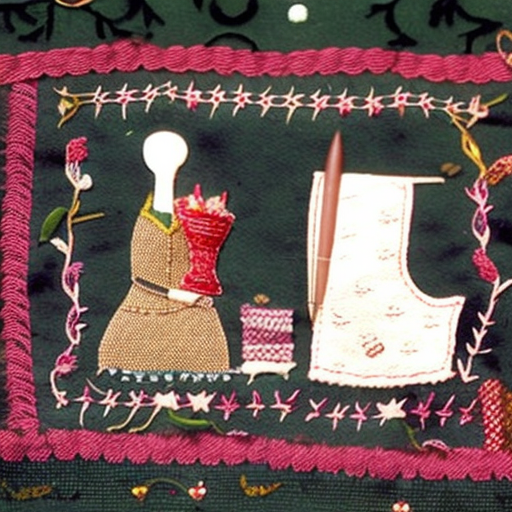Sewing is an ancient craft that has been vital to our society for thousands of years. It is the art of joining
fabrics, leather, and other materials together using a needle and thread. But have you ever wondered who
actually invented sewing?
Although the exact origin of sewing is unclear, evidence suggests that it dates back to the Paleolithic era,
approximately 30,000 years ago. The first known sewing needles were made from bone or animal horns, and the
threads were typically crafted from plant materials like tree barks or sinew from animal tendons.
Sewing techniques and tools further evolved throughout the years. Ancient Egyptians, for example, used iron
needles and created intricate stitches in their garments. The Romans developed sewing techniques that were
passed down through generations, leading to the development of more sophisticated tools like the needle with an
eye for threading.
While it’s difficult to attribute the invention of sewing to a single individual, one notable figure in sewing
history is Elias Howe. Born in 1819, Howe was an American inventor who is widely
credited with inventing the modern sewing machine. In 1846, he patented the first practical sewing machine,
which revolutionized the textile industry and made sewing more efficient than ever before.
Howe’s invention automated the stitching process, significantly increasing productivity in garment factories and
enabling more complex stitching patterns. His ingenious design featured a needle with an eye at the point and a
shuttle mechanism that passed the thread through the fabric, imitating hand-sewn stitches.
Although Howe played a crucial role in the advancement of sewing, it is important to acknowledge the countless
anonymous individuals throughout history who contributed to the development of sewing techniques and tools. The
evolution of sewing has involved a collective effort across different cultures spanning centuries.
In modern times, sewing continues to be a beloved craft, combining practicality with creativity. From making
clothes to home decor, sewing remains an essential skill passed down through generations, connecting us to our
ancestors’ ingenious methods. It’s a testament to the enduring legacy of a craft that has played a significant
role in shaping human civilization.
In conclusion, while we can’t definitively name a single individual as the inventor of sewing, it is a craft
that has evolved over thousands of years, becoming an integral part of our cultural heritage. Elias Howe’s
invention of the sewing machine in the mid-19th century is undeniably a milestone in sewing history, propelling
the craft forward. Nevertheless, sewing remains a testament to the collective ingenuity of countless
individuals throughout history.




